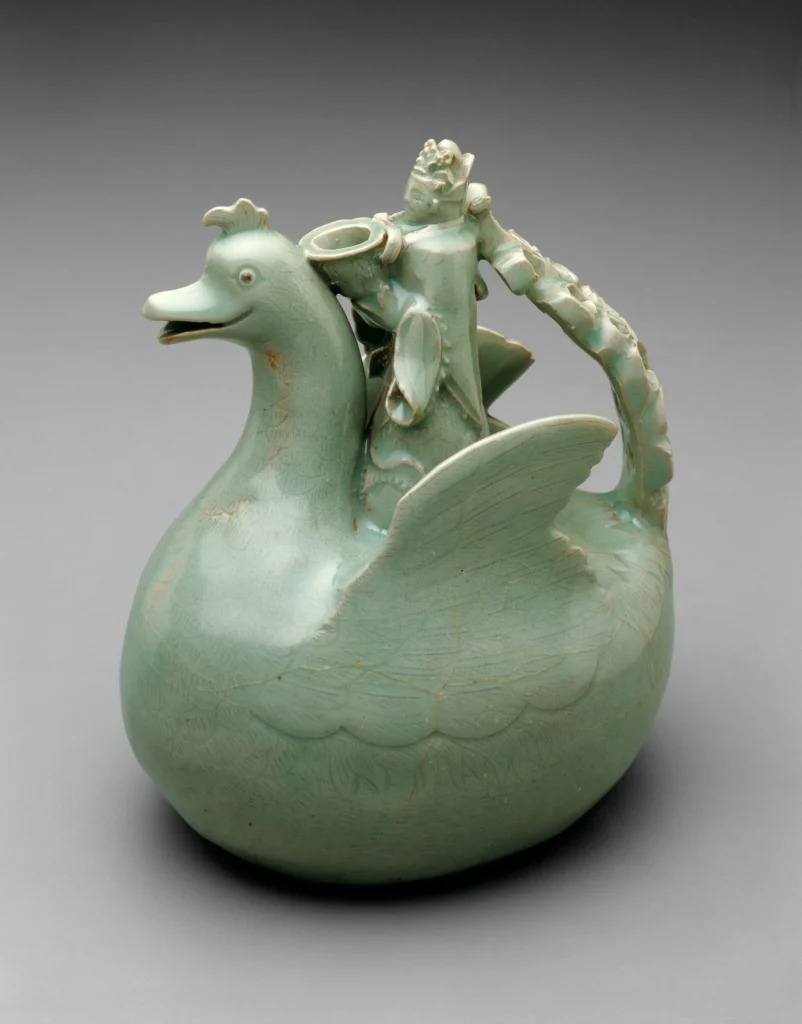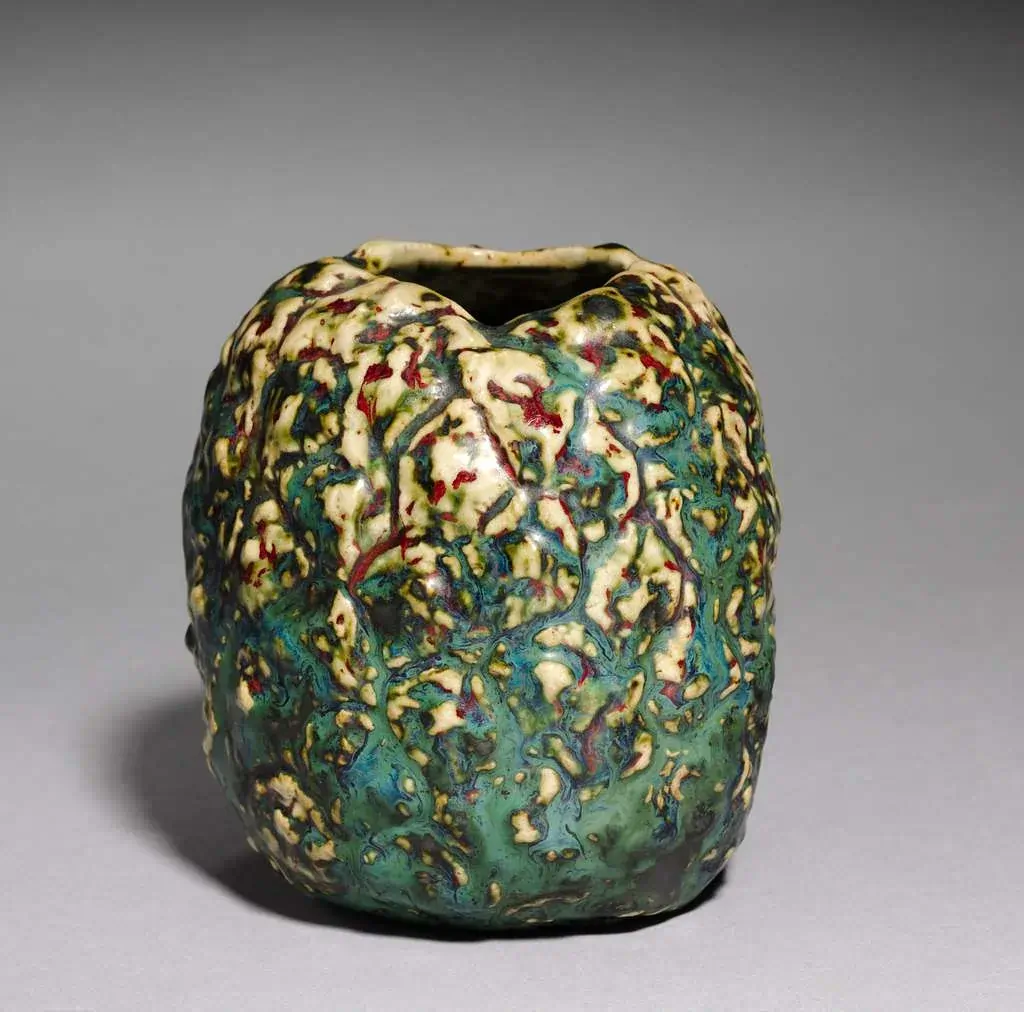During the 16th and 17th centuries of the Ming dynasty era Kraak porcelain emerged as a ceramic development impactful, on both Asian and European artistic traditions. Blue and white ceramics with designs became items influencing global trade interactions and cultural connections between East and West. The intricate panel motifs and exquisite artistry elevated them to luxuries, among aristocrats and traders.
The history of Kraak porcelain traces its origins, from pottery kilns to its travels along sea trade routes and its impact on ceramic traditions worldwide. Thanks to the trading network of the Dutch East India Company that spanned from Batavia to Amsterdam and beyond, to markets; these ceramics inspired numerous copies and set fresh benchmarks in the realm of ceramic craftsmanship. This detailed manual delves into the traits and historical importance of these artifacts while also shedding light on how to identify and appraise them for collectors and enthusiasts.
Table of Contents
ToggleOrigins and Development of Kraak Porcelain
The term “Kraak porcelain” came about from the portuguese trading vessels known as carracks which initially brought these goods to Europe during the late Ming dynasty, in the Wanli era (1573-1620) Signifying a notable change, in Chinese ceramic craftsmanship.
Definition and characteristics
Kraak porcelain exhibits several distinctive features that set it apart from other Chinese ceramics:
- Thin, lightweight body with delicate construction
- Elaborate blue underglaze decorations organized in foliated radial panels
- Roughly cut footrims and fritted edges
- Crisp glaze with characteristic firing flaws
Historical context and timeline
The rise of kraak porcelain occurred during a time of shifts, in trade dynamics. In the 1500s the Portuguese began trading with the Far East leading to exports of porcelain, to Western markets. When Dutch forces captured ships in 1602 and 1603 it was a turning point as it brought quantities of kraak porcelain to the Dutch market. These initial shipments, which also included spices, silk and musk in addition to porcelain set the stage for trading trends shaping the century.
Production centers and techniques
The main places where kraak porcelain was primarily manufactured were, in Jingdezhen and Zhangzhou cities in the times of Wanli period happened an amount of unrest in the imperial kilns located in Jingdezhen with protests occurring in 1597 and 1604 eventually leading to the official shutting down of the imperial kilns in 1608 which led to skilled craftsmen being open, for private orders impacting export production greatly The porcelain made in Jingdezhen was known for its top notch quality showing superior characteristics like having higher firing temperatures and using more refined clay bodies The technological breakthrough enabled the development of resilient containers capable of enduring hot liquids and harsh marine environments.
Distinctive Features and Designs
The special features of kraak porcelain are revealed by its panel based design approach and meticulous manufacturing methods showcasing a blend of mastery and creative ingenuity not seen in other Chinese ceramics from the same era.
Radial panel decoration
One of the features of kraak porcelain is its organized panel design marked by unique border motifs which developed between 1570 and 1650. The borders can be classified into nine main categories;
- Border I and II (1565-1625): Transitional styles with Jiajing period influences
- Border III-V (1575-1615): Distinctive sixteenth-century characteristics
- Border VI-IX (1575-1650): Evolution toward seventeenth-century aesthetics
Common motifs and symbols
The ornamental designs created in blue showcase impressive artistic flexibility. The central medallions are primarily adorned with landscapes and animals while border decorations often feature Buddhist and Daoist symbols. By the 1630’s European inspirations started to surface with the incorporation of tulip patterns revealing the impact of floral trade, on Chinese decorative craftsmanship.
Shapes and forms
The craftsmanship of kraak porcelain shows attention to detail and skillful artistry in its structure. The material used for the body is consistently quality, with walls that are surprisingly strong. One unique characteristic is the presence of “chatter marks” which are lines spreading from the center to the base due to how it’s made. The concave part often includes molded patterns, with pointed medallions adding a touch to these objects.
The lower part of the design usually features segments separated by lines that split near the base and include stylized symbols and dots, for decoration purposes. The structured way of decorating items along with the level of craftsmanship resulted in pieces that were functional and visually appealing to global markets such, as Islamic regions.
Global Trade and Cultural Impact
The trade routes, across the seas during the 17th century changed kraak porcelain, from a rare luxury item to a widely traded product worldwide. This shift started with merchants initially bringing these goods to markets; however it was the Dutch East India Company (known as VOC) that truly transformed the trading landscape.
Dutch East India Company's role
The founding of the VOC, in 1602 signified a change in trade relations between the East and the West. By employing planning and bold expansion strategies the company built a network of trading outposts. The founding of Batavia in 1619 and the settlement in Taiwan in 1624 provided links to manufacturing hubs, in China. The magnitude of this trade was unparalleled;
- Annual shipments exceeded 136,000 pieces by 1636
- Total imports surpassed 3 million vessels between 1604-1657
- Single cargo loads could contain up to 100,000 individual pieces
Influence on European art and culture
The surge of kraak porcelain had an impact, on the preferences and collecting behaviors of Europeans. Our desire for these ceramics was so strong, in Europe it led to the term ‘Porzellankrankheit’ (porcelain sickness). Affluent collectors proudly showcased their collection pieces as part of decorations. This cultural trend is clearly depicted in Dutch Golden Age artworks where kraak items often symbolize sophistication and affluence.
Imitations and adaptations in other regions
The decline of production, after the Ming dynastys collapse in 1644 triggered a reaction in ceramic making processes. Potters in Arita region of Japan started crafting porcelain intended for trade while workshops in Persia developed their styles. In Europe potteries in Delft excelled in creating adaptations that closely resembled ceramics known as Delftware porcelain. Even though these imitations varied technically from porcelain they garnered commercial recognition and paved the way, for innovative artistic expressions.
Collecting and Authenticating Kraak Porcelain
Authentication hurdles, in kraak porcelain have grown more intricate due to the rise of high tech imitations in today]s market scene prompting collectors and institutions to assess traits, for authenticity and worthiness assessment.
Key factors in identification
Authentic kraak porcelain exhibits several distinctive characteristics that help distinguish it from later reproductions:
- Physical attributes:
- Thin paste with translucent quality
- Glassy, shiny glaze with occasional irregularities
- Distinctive “mouse-nibbled” edges
- Radiating chatter marks on the base
- Kiln grit adherence to foot rim
Inauthentic pieces are usually given away by their texture and lackluster finishes without the imperfections characteristic of their time period during firing processes. Japanese imitations date back, to the 1800s and 1900s exhibit varying shades of unique design variations despite being made.
Notable collections and museums
The Topkapı Palace holds a collection of artifacts, from kraak porcelain worldwide while esteemed institutions also house valuable items of the same kind globally too. The field of archaeology has greatly enhanced knowledge by uncovering shipwrecks which offer precise insights into historical production timelines and trade routes. These discoveries beneath the sea have been instrumental in verifying the authenticity of artifacts by showcasing features relevant, to specific time periods.
Market value and investment potential
The market for kraak porcelain demonstrates remarkable resilience, with values influenced by several key factors:
Primary value determinants:
- Historical significance and provenance
- Condition and preservation state
- Rarity of design or form
- Authentication certainty
Although the condition is usually important, for determining value in antiques and collectibles markets uncommon items can still fetch prices even with flaws. Items with designs are especially prized, as there are than 30 known pieces with heraldic imagery. Investing in these items can be lucrative those with provenance and authentication, from experts.
Conclusion
During the Ming dynasty era when Kraak porcelain was prominent, in the market scene as a result of a fusion between East and West signifying a crucial point in ceramic history; it was not just about trading goods but rather about creating masterpieces representing artistic brilliance and intercultural connections at their finest level. These magnificent blue and white ceramics surpassed their purpose as mere items of commerce to evolve into emblems of creativity and cross cultural impact. Their influence has left an enduring mark on the world of artistry spanning across centuries from the flourishing period of art, to contemporary methods of collecting art pieces; showcasing the timeless charm of their intricate panel designs and meticulous craftsmanship.
Collectors and experts today still appreciate kraak porcelain, for its importance and artistic value despite the difficulties in verifying its authenticity in today’s market scene. The extraordinary pieces act as connections to an era in the history of global trade where Chinese craftsmanship intertwined with European preferences to establish a lasting ceramic heritage. Their conservation and examination are crucial in comprehending the connections, between artistry, business and cultural interaction during the modern era.
FAQs
What is the historical background of Kraak porcelain?
Kraak porcelain, also known as Kraak ware or Dutch Kraakporselein, is a type of Chinese export porcelain primarily produced during the late Ming dynasty. It was mainly manufactured during the Wanli reign from 1573 to 1620, with continued production into the Tianqi (1620–1627) and Chongzhen (1627–1644) reigns.
Why is porcelain considered historically significant?
Porcelain, originating from ancient China, has been a significant cultural and economic export since the Han and Tang Dynasties. Its global distribution fostered economic and cultural exchanges between China and the rest of the world, deeply influencing the traditional cultures and lifestyles of various nations.
What made porcelain so crucial during the Ming Dynasty?
During the Ming Dynasty, the expansion of the porcelain industry was heavily promoted by the Yuan emperors who were keen on enhancing profitable international trade. This era saw a shift from somber decorations to vibrant, richly hued designs painted in underglaze cobalt, specifically tailored to meet the tastes of significant export markets in the Middle East, the Indies, and the West.
Why is Jingdezhen significant in the history of porcelain?
Jingdezhen, often referred to as the “Porcelain Capital,” has been pivotal in the production of Chinese ceramics for over a millennium, making it a crucial site in the history of porcelain. The city’s extensive and well-documented history spans more than 2,000 years, during which it produced some of the finest and most important ceramics in China.



